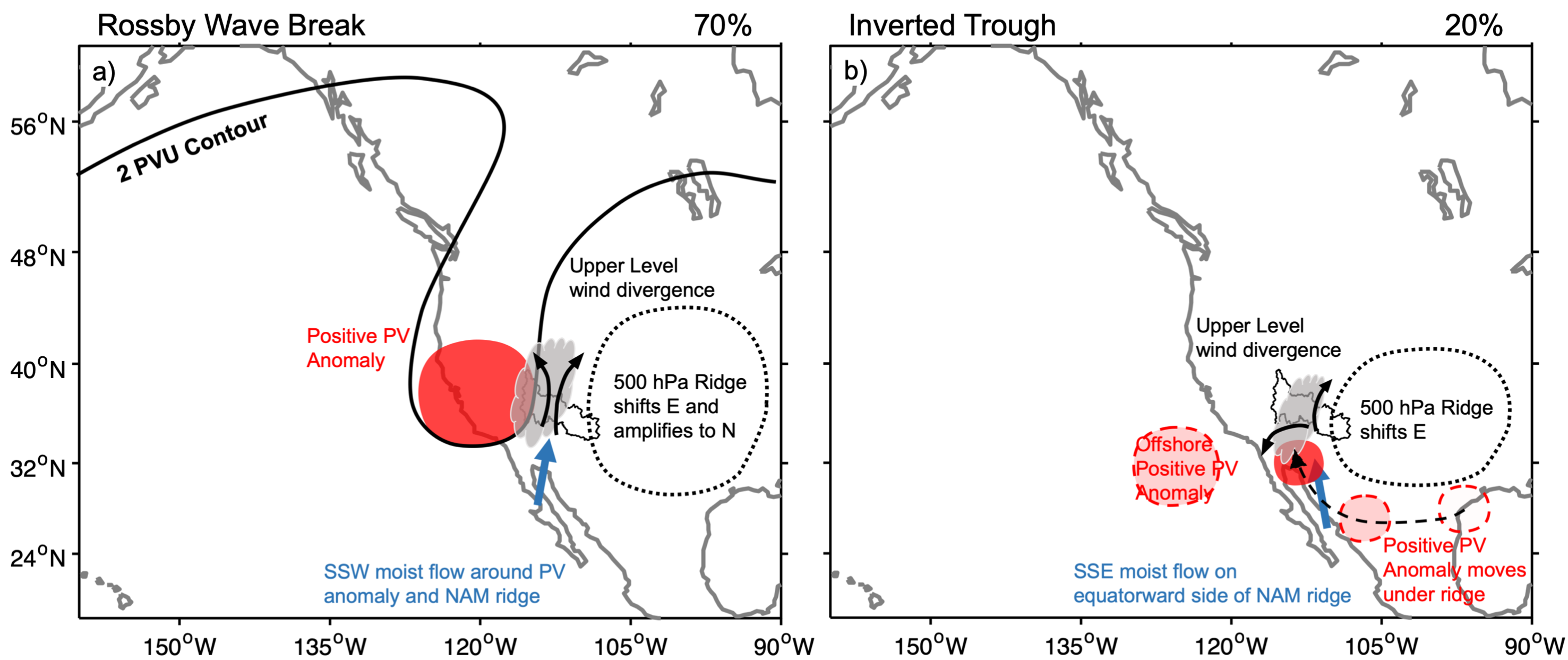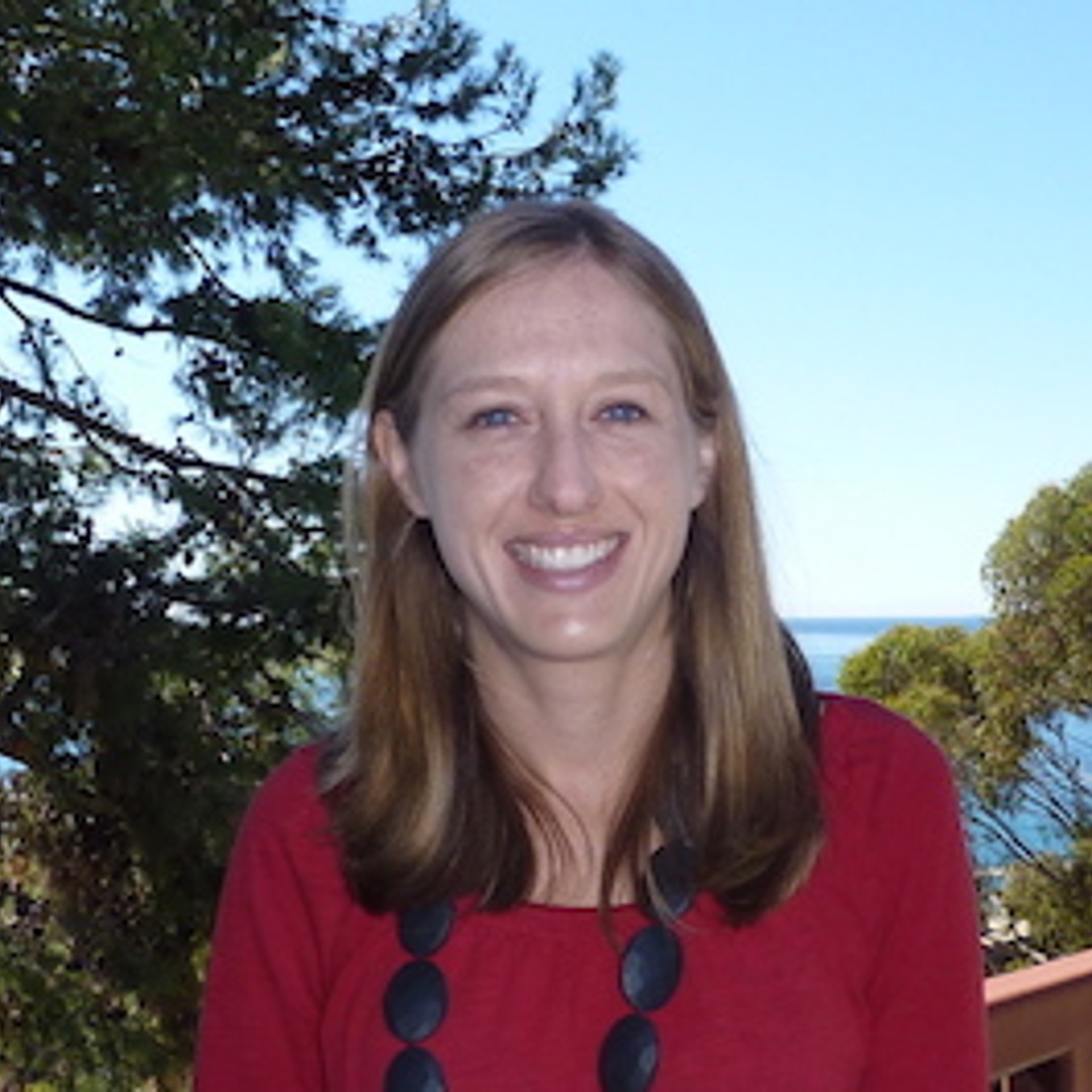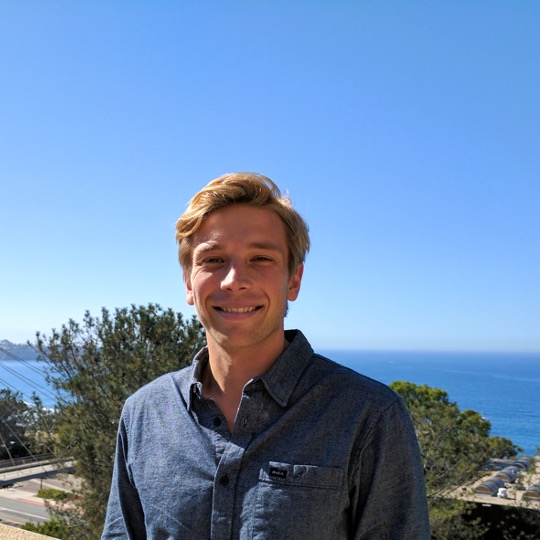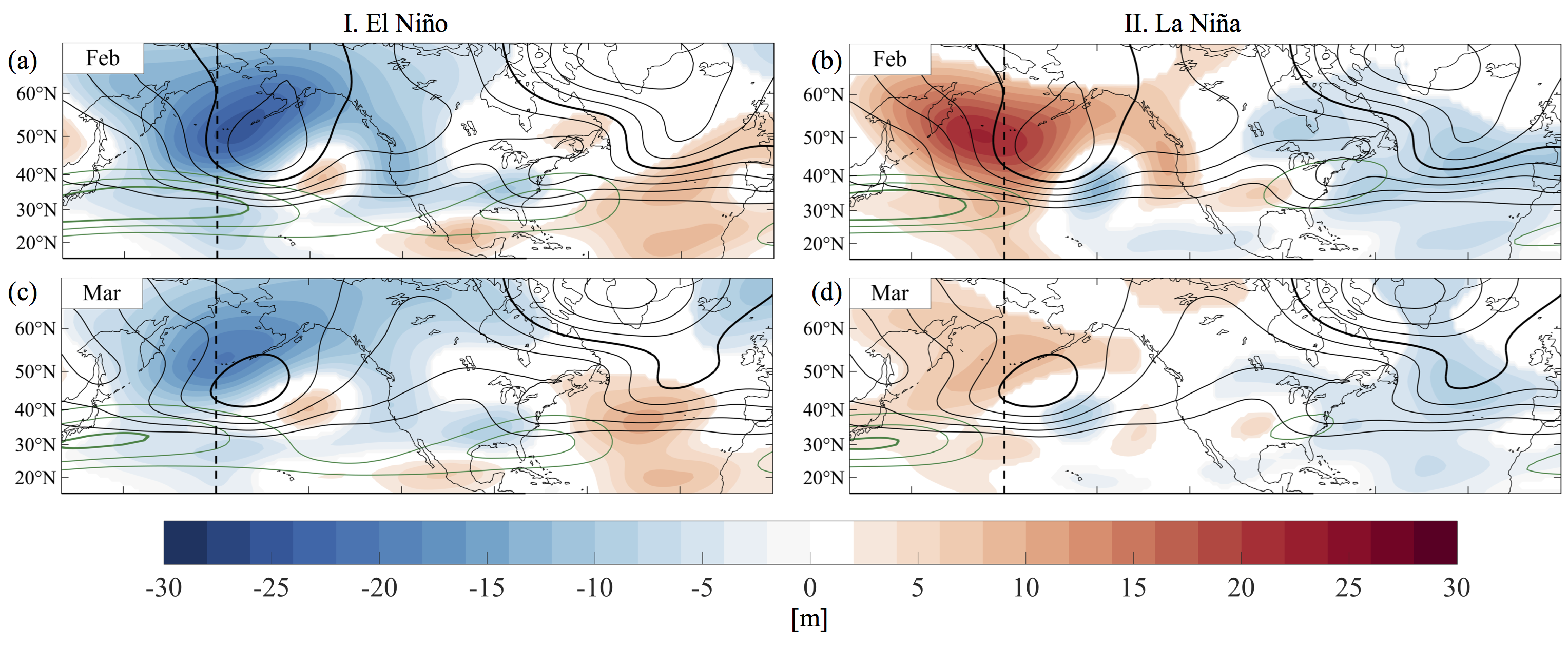Past Projects
Characteristics, Origins, and Impacts of Summertime Extreme Precipitation in the Lake Mead Watershed
The North American monsoon (NAM) is the main driver of summertime climate variability in the U.S. Southwest. Previous studies of the NAM have primarily focused on the Tier I region of the North American Monsoon Experiment (NAME), spanning central-western Mexico, southern Arizona, and New Mexico. This study, however, presents a climatological characterization of summertime precipitation, defined as July–September (JAS), in the Lake Mead watershed, located in the NAME Tier II region. Spatiotemporal variability of JAS rainfall is examined from 1981 to 2016 using gridded precipitation data and the meteorological mechanisms that account for this variability are investigated using reanalyses. The importance of the number of wet days (24-h rainfall ≥1 mm) and extreme rainfall events (95th percentile of wet days) to the total JAS precipitation is examined and shows extreme events playing a larger role in the west and central basin. An investigation into the dynamical drivers of extreme rainfall events indicates that anticyclonic Rossby wave breaking (RWB) in the midlatitude westerlies over the U.S. West Coast is associated with 89% of precipitation events >10 mm (98th percentile of wet days) over the Lake Mead basin. This is in contrast to the NAME Tier I region where easterly upper-level disturbances such as inverted troughs are the dominant driver of extreme precipitation. Due to the synoptic nature of RWB events, corresponding impacts and hazards extend beyond the Lake Mead watershed are relevant for the greater U.S. Southwest. link to paper

Project Lead: Mike Sierks

Collaborators: Julie Kalansky, Forest Cannon, Marty Ralph



Monthly Modulation of ENSO Teleconnections: Implications for North American Potential Predictability
Using a high-resolution atmospheric general circulation model simulation of unprecedented ensemble size, we examine potential predictability of monthly anomalies under El Niño Southern Oscillation (ENSO) forcing and background internal variability. This study reveals the pronounced month-to-month evolution of both the ENSO forcing signal and internal variability. Internal variance in upper-level geopotential height decreases ($\sim10\%$) over the North Pacific during El Niño as the westerly jet extends eastward, allowing forced signals to account for a greater fraction of the total variability, and leading to increased potential predictability. We identify March of El Niño years as the most predictable month followed closely by February using a signal-to-noise anaylsis. In contrast, December, a month typically included in teleconnection studies, shows little-to-no potential predictability. We show that the seasonal evolution of SST forcing and variability leads to significant signal-to-noise relationships that can be directly linked to both upper-level and surface variable predictability for a given month. The stark changes in forced response, internal variability, and thus signal-to-noise across an ENSO season indicate that subseasonal fields should be used to diagnose potential predictability over North America associated with ENSO teleconnections. Using surface air temperature and precipitation as examples, this study provides motivation to pursue ‘windows of forecast opportunity’, in which statistical skill can be developed, tested, and leveraged to determine times and regions in which this skill may be elevated. link to paper

Project Lead: Will Chapman

Collaborators: Aneesh Subramanian, Mike Sierks, Shang-Ping Xie, Marty Ralph, Youichi Kamae





